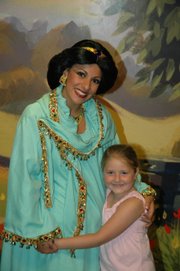Title: Baking Up Technology Pie
Title of Journal: Online; May/Jun 2007, Vol. 31 Issue 3, p41-43
Author: Hammond, Richard
Date: July 1, 2007
This article talks about the new technologies that are available to libraries. These new tools range RFID,open standards, Web 2.0, Podcast, electronic paper, and semantic tools. The article speaks of these technologies in a fun food based format. When making anything there must first be a chef or a baker. In this case the chef/baker is the librarians. These librarians will combine these ingredients to achieve just the right flavor in a library. The one important thing to remember as a chef before baking is that technology will always remain an enabling, not a decision making, tool. Another thing to keep in mind before adding ingredients is to "remebre that it is not just the ingredients it is how we bake them together that makes them work".
The first ingredient that the author talks about is RFID (Radio Frequency Identification). These are small transmitters and receivers that enable libraries to check in a mass quantity of materials at one time. Barcodes are no longer hindering or even necessary. This technology does have its downfalls. It presents a challege for staff members to be technology support.
The second ingredient is open standard. An open standard is the agreed upon dictionary of allowable terms. This standards allows users to exchange data between different systems without purchasing specific, proprietary software. This too has its downfalls with it requiring more upfront involvement and maintenance.
The third ingredients is Web 2.0. This particular ingredients doesn't have an exact definition. One way to describe it is its ability for two way conversation for collaborative endeavors. One such example is Wikipedia. This too is a continuous improvement process.
The fourth ingredients is Podcast. This is a technology of listening to everything. Nothing now days is just text. This technology is allowing anyone and everyone to communicate with a variety of formats.
The fifth ingredient is electronic paper. Electronic paper can better be described as Ebooks. This technology allows users to read books from their computer screen. Its downfall is that some individuals want to hold a book instead of scrolling.
The sixth and final ingredient is semantic tools. These tools, in conjunction with open standard, adds intelligence to search inquires. One may search for example anything about a "tasty orange" not just a plain orange.
With librarians using these ingredients they are able to showcase their talents to the patrons and bake up a yummy treat.
This particular articles content was foreign. I had no idea what these products did or how they worked. I now know that the independent checkout at my library is using an RFID. That Web 2.0 is not based on Internet explorer but is a particular program that enhances the online experience for two or more individuals. And lastly, that a search engine can be hindered by semantic and open standard searching. I truly feel that this article brought me up to speed on a few new technologies.
Subscribe to:
Post Comments (Atom)

No comments:
Post a Comment